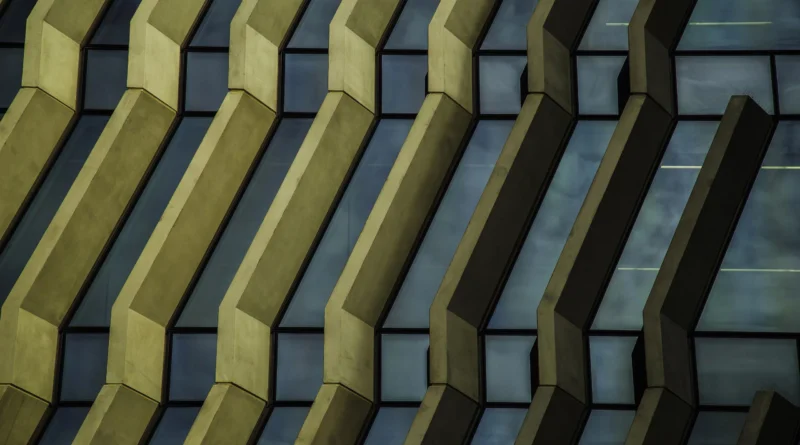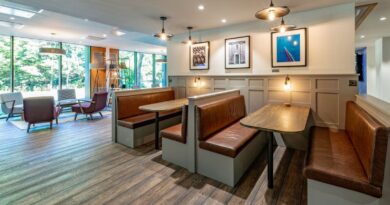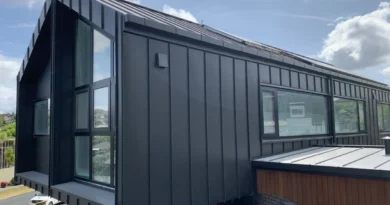Slicing Precision: Waterjet Cutting’s Role in Revolutionary Architectural Design
In the intricate and often awe-inspiring world of architecture, the quest for precision and versatility leads us to one of the most innovative technologies available today: waterjet cutting. A method that seamlessly combines the force of water and abrasive particles to slice through materials with astonishing accuracy, waterjet cutting has carved its niche as an indispensable tool in architectural design and construction. This cutting-edge technology not only opens up a realm of possibilities for architects but also promises to redefine the standards of precision and complexity achievable in architectural applications.
What is Waterjet Cutting?
At its core, waterjet cutting is a process that employs a high-pressure stream of water, sometimes mixed with abrasive materials, to cut a variety of substances. This technology, which has its roots in hydraulic mining techniques from the mid-19th century, has evolved dramatically to become a cornerstone in modern manufacturing and design industries. Its application in architecture, particularly, benefits from the technology’s ability to perform precise cuts without compromising the integrity of the material being cut.
Why is Precision Important in Architectural Applications?
Precision in architectural design is not merely a matter of aesthetics; it’s the foundation upon which safety, sustainability, and structural integrity rest. Architectural elements like façade panels, intricate inlays, and customized fittings demand exact specifications to ensure they fit perfectly into their designated spaces. The margin for error is minimal, and the cost of inaccuracies can be high, making the precision offered by waterjet cutting invaluable.
How Does Waterjet Cutting Work?
Waterjet cutting unfolds through a fascinating orchestration of technology and physics:
- Design and Setup: The process begins with digital designs, translated into instructions for the cutting machine.
- Material Preparation: The chosen material is placed on the cutting table, ready for the process to start.
- Waterjet Generation: A high-pressure pump directs water to a nozzle, where it accelerates to speeds capable of cutting through materials.
- Abrasive Injection: For harder materials, an abrasive, such as garnet, is added to the stream to enhance cutting power.
- Cutting Process: The jet moves over the material, following the designated path to make precise cuts.
- Final Inspection and Cleaning: After cutting, the piece is inspected for quality and cleaned, ready for its role in the architectural project.
What Materials Can Be Cut with Waterjet Cutting in Architecture?
The versatility of the water jet cutter is evident in the wide range of materials it can handle, each with unique characteristics and applications in architecture:
- Glass: Offers transparency and reflection; used in facades and decorative elements.
- Metal: Provides strength and durability; utilized in structural supports and design accents.
- Stone and Marble: Brings natural beauty; popular for flooring, walls, and countertops.
- Ceramics: Known for hardness and wear resistance; used in tiling and decorative facades.
- Composite Materials: Offer a blend of properties; used in innovative architectural solutions.
What Are the Advantages of Using Waterjet Cutting in Architecture?
The benefits of integrating waterjet cutting into architectural projects are manifold, contributing not only to the design and aesthetic appeal but also to the efficiency and sustainability of constructions:
- Versatility in Materials: Capable of cutting a broad spectrum of materials with precision.
- Precision and Accuracy: Achieves intricate cuts and complex shapes unattainable by traditional methods.
- No Heat-Affected Zones: Preserves the integrity and properties of materials by avoiding heat-induced alterations.
- Capability to Cut Complex Shapes: Enables the creation of detailed and complex design elements without additional finishing processes.
How Precise is Waterjet Cutting in Architectural Applications?
The precision of waterjet cutting can achieve tolerances as tight as ±0.005 inches, depending on the setup, material, and design complexity. This level of accuracy surpasses many traditional cutting technologies, making waterjet cutting a preferred choice for applications where detail and precision are paramount.
Factors Affecting Precision in Waterjet Cutting
Several factors influence the precision achievable with waterjet cutting, including:
- Water Pressure: Higher pressures allow for cleaner, more precise cuts.
- Nozzle Size and Type: Determines the focus and intensity of the water jet.
- Material Type and Thickness: Affects the cutting speed and quality.
- Cutting Speed: Faster speeds may decrease precision but increase efficiency.
Real-World Examples of Waterjet Cutting in Architecture
From iconic skyscrapers to bespoke installations, waterjet cutting has played a pivotal role in numerous architectural marvels, highlighting its capacity for precision and versatility. Examples include:
- Intricate Facade Panels: Creating complex patterns that contribute to the aesthetic and functional aspects of building exteriors.
- Customized Flooring Inlays: Designing detailed and unique flooring solutions that combine different materials.
- Sculptural Elements: Fabricating intricate designs that serve as focal points in public and private spaces.
Design Considerations for Architects Using Waterjet Cutting
When incorporating waterjet cutting into architectural designs, several considerations ensure the technology’s potential is fully harnessed:
- Material Choice: Understanding how different materials react to waterjet cutting helps in making informed decisions.
- Thickness and Complexity: Balancing the design complexity with material thickness can optimize the cutting process.
- Optimizing Designs for Precision: Tailoring designs to capitalize on the precision capabilities of waterjet cutting enhances the overall outcome.
What Are the Limitations of Waterjet Cutting in Architectural Applications?
While waterjet cutting offers numerous advantages, it’s important to recognize its limitations:
- Cost Considerations: High operational costs can be a factor, especially for small-scale projects.
- Size Limitations: The size of the cutting table may restrict the dimensions of materials that can be cut.
- Time Constraints for Complex Cuts: Intricate designs require longer cutting times, impacting project timelines.
How to Choose a Waterjet Cutting Service for Architectural Projects?
Selecting the right waterjet cutting service provider is crucial for the success of an architectural project. Factors to consider include:
- Technology Used: Advanced machinery indicates a capability for higher precision and efficiency.
- Portfolio of Past Projects: Demonstrates experience and expertise in handling architectural applications.
- Precision Capabilities: Ensuring the provider can meet the specific tolerances required for the project.
- Customer Service: Responsive and consultative service can significantly impact the project’s outcome.
Innovations in Waterjet Cutting Technology and Their Impact on Architecture
Technological advancements continue to enhance waterjet cutting capabilities, promising even greater precision, efficiency, and material versatility. Innovations in pump technology, nozzle design, and abrasive materials are paving the way for new architectural possibilities, enabling designs that were once considered unattainable.
Waterjet Cutting vs. Other Cutting Technologies in Architecture
Compared to laser and plasma cutting, waterjet cutting stands out for its versatility and lack of heat-affected zones. Each technology has its pros and cons, but waterjet cutting’s ability to handle a wide range of materials and its precision makes it particularly suited to architectural applications.
- Laser Cutting: Offers high precision but is limited by material type and thickness.
- Plasma Cutting: Efficient for metal cutting but lacks the precision of waterjet cutting.
Environmental Considerations of Waterjet Cutting in Architectural Design
Sustainability is a growing concern in all sectors, including architecture. Waterjet cutting, with its minimal waste production and ability to use recycled water, presents an environmentally friendly option. The process generates no hazardous materials, and the use of natural abrasives like garnet contributes to its eco-friendly profile.
Safety Measures in Waterjet Cutting Operations
Safety is paramount in waterjet cutting operations. Key measures include:
- Protective Equipment: Ensuring operators wear appropriate safety gear.
- Machine Maintenance: Regular checks and maintenance prevent accidents.
- Training: Comprehensive training for all operators on safety protocols and emergency procedures.
The Future of Waterjet Cutting in Architecture
As architectural designs continue to push the boundaries of creativity and complexity, waterjet cutting will undoubtedly play a critical role in bringing these visions to life. Its ability to combine precision, versatility, and sustainability makes it a technology that not only meets the current demands of the architectural industry but also promises to evolve with it, offering new avenues for innovation and design excellence.
Conclusion
Waterjet cutting represents a convergence of precision, versatility, and innovation in the architectural world. Its ability to transform various materials into intricate designs and structures makes it a pivotal technology in modern architecture. As we look to the future, the role of waterjet cutting in advancing architectural applications is not just promising; it’s essential. Through continued technological advancements and a commitment to sustainability, waterjet cutting will continue to shape the built environment, pushing the limits of what is possible in architectural design.




